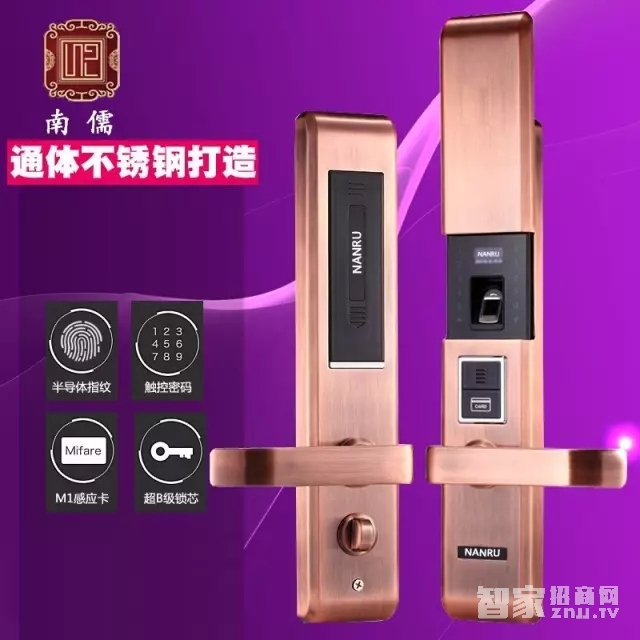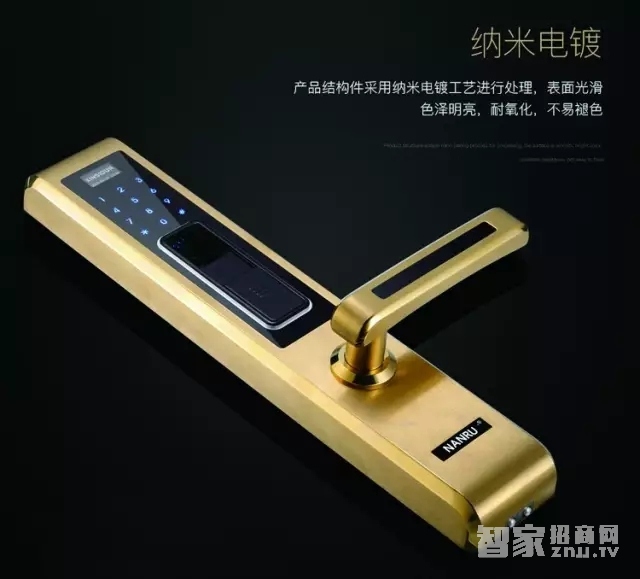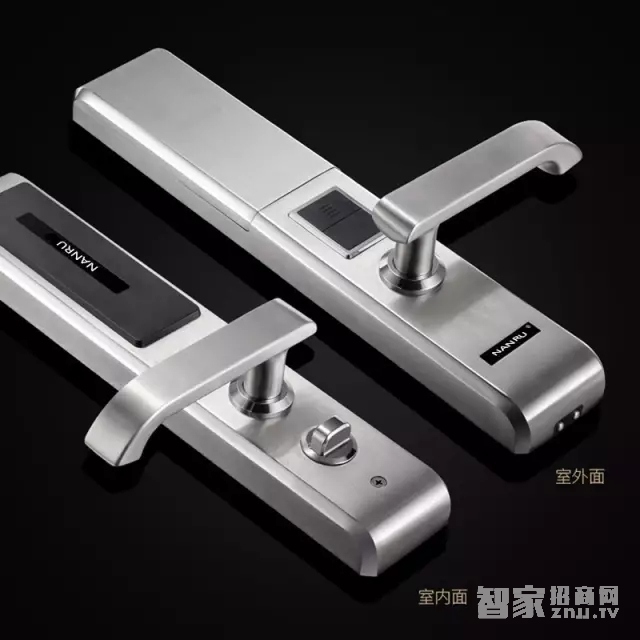For consumers, buying a smart lock is nothing more than a consideration: function, brand, quality, appearance, and material. At present, the smart lock material is mainly divided into two categories: stainless steel lock body and zinc alloy lock body! Then the difference should be different, what are the advantages and disadvantages between them?
Therefore, today's analysts have analyzed the differences, advantages, disadvantages, and resolutions between zinc alloy fingerprint locks and stainless steel fingerprint locks, hoping to benefit everyone.
1. The “two-eight law†of fingerprint lock industry
The law of twenty-eight is also called the Law of Bardeño. It was invented by Italian economist Palerdo in the late 19th and early 20th centuries. He believes that in any group of things, the most important one is only a small part of it, about 20%, and the remaining 80%, although a majority, is secondary, so it is also called the 28 rule.

In the fingerprint lock industry, it also showed the phenomenon of "28 laws." However, whether this "two-eight law" is different from the "two-eight law" of Baledo, this refers to the market share, and the Pareto's "two-eight law" is just an introduction.
At present, stainless steel fingerprint locks only account for about 20%, while the market share of zinc alloy fingerprint locks is about 80%. Stainless steel fingerprint locks are mostly used in relatively high-end or high safety requirements due to cost and other reasons. Zinc alloy fingerprint locks are usually more affordable due to the relatively low cost.
Why does the fingerprint lock industry show such "two-eight law"? This has to be analyzed from the advantages and disadvantages of the two and their respective characteristics.

2, the advantages and disadvantages of stainless steel fingerprint lock
At present, the stainless steel fingerprint lock is mainly based on 304 stainless steel, which can be widely used in different areas such as coastal areas, alpine areas, and high temperatures.
First, the advantages of stainless steel fingerprint lock. 1) It has the characteristics of heat resistance and low temperature strength, and can be used in areas with severe cold, high temperature, or large temperature difference; 2) It has strong corrosion resistance and can be widely used in coastal and tropical rain forests with high salinity and high humidity. Area: 3) High strength, fireproof, anti-drilling, anti-smashing, anti-saw, anti-impact and other functions, long service life, high safety: 4) uniform texture, high density, no air hole, trachoma, bright and uniform color, delicate , can maintain the original appearance of the product for a long time.

Second, the disadvantages of stainless steel fingerprint lock. 1) Stainless steel fingerprint lock has high cost, generally more than twice as high as zinc alloy fingerprint lock; 2) Stainless steel texture is hard and difficult to form, so the appearance is too single and the selectivity is bad.
3, the advantages and disadvantages of zinc alloy fingerprint lock
Zinc alloys are the most widely used materials in the fingerprint lock industry. Zinc alloys are based on zinc and other elements. Often added alloy elements are aluminum, copper, cadmium, magnesium, titanium, lead and so on. What advantages and disadvantages does it have?
First, the advantages of zinc alloy fingerprint lock. 1) Good casting performance, die-casting of complex and thin-walled precision parts, smooth casting surface, multiple patterns, and high selectivity; 2) Low melting point, melting at 385°C, easy for die-casting molding, easy to manufacture a variety of styles, A variety of shapes: 3) easy to cast, whether it is material prices or casting costs are relatively low, the price is lower than the stainless steel fingerprint lock.

Second, the disadvantages of zinc alloy fingerprint lock. 1) Poor corrosion resistance. When the alloying elements lead, tin, and cadmium exceed the standard, the castings are aged and deformed, showing volume expansion, a significant decrease in mechanical properties, especially plasticity, and a long time or even rupture. Tin, lead, and cadmium have very low solubility in zinc alloys, and they concentrate on the grain boundaries to become cathodes. The aluminum-rich solid solution serves as an anode and promotes intergranular electrochemical corrosion in the presence of water vapor (electrolyte). Die castings are aged due to intergranular corrosion; 2) Zinc alloy die castings should not be used in high temperature and low temperature (below 0°C) working environment. Zinc alloys have good mechanical properties at room temperature. However, the tensile strength at low temperatures and the impact properties at low temperatures are significantly reduced. 3) Zinc alloy fingerprint lock wear resistance is poor, after a period of use, it is often easy to fade. 4) It is relatively brittle and often breaks the handle.

4, how to identify the difference between the two
It is difficult for the average consumer and many fingerprint lock industry practitioners to distinguish between the stainless steel fingerprint lock and the zinc alloy fingerprint lock. Here, the door locker summed up the three methods of “one stroke, two views, and three numbers†and hoped to help you.
A plan. Hard objects can be used to draw on the front panel or the back panel of the lock. The texture is hard and the inside and outside of the scratches are the same or similar to the stainless steel fingerprint lock; the texture is soft and the scratch is silver white. Fingerprint lock.
Second look. Because stainless steel molding is relatively difficult, so the appearance is relatively simple, without too many complex patterns, the surface directly drawing, can not see the electroplating bubbles and particles; zinc alloy fingerprint lock because of strong plasticity, so many styles, beautiful patterns, beautiful patterns, the surface There are obvious electroplating bubbles or particles; the stainless steel lock is more natural, exquisite and delicate than the zinc alloy lock, and the texture is warm and beautiful under the illumination of the light.
Three numbers. Because of the hard texture of the stainless steel fingerprint lock, there is no positioning fulcrum on the back of the panel; however, both the zinc alloy fingerprint lock panel and the fingerprint lock need to be cast, and the material texture is soft, so the back of the panel needs 4-8 positioning support points distributed respectively on the panel. The periphery and the center.
Conclusion: From the above analysis we can know that the fingerprint locks and zinc alloy fingerprint locks have their own advantages and disadvantages. From the current point of view, the use of stainless steel smart lock environment is better than the zinc alloy smart lock, durable, and high security; and zinc alloy smart lock is fashionable and diverse patterns to meet the needs of different consumers.
related suggestion:
Article: How Much Money Does a Smart Lock Door Lock Agent
Recommended: password lock manufacturer price password lock joining agent brand smart lock price
WIFI Smart Lock (http://zns.znjj.tv)-Professional smart lock agent joining website, providing the industry's most comprehensive intelligent fingerprint password lock joining agent, smart lock product library, smart door lock price, smart lock brand , smart lock manufacturers Daquan information, welcome to browse online consulting.
Hole Opener,HDD Roller Cone Reamers,20 Inch Hole Opener,20 Inch PDC Hole Opener
CANGZHOU GREAT DRILL BITS CO., LTD , https://www.pdcbits.nl